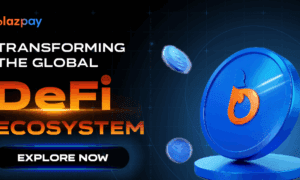Cryptocurrency, once niche, has entered mainstream awareness in the last decade. From Bitcoin’s rise to DeFi platform explosions, the landscape keeps changing. Looking ahead, multiple trends will shape this fast-growing industry. Here, we’ll delve into 10 cryptocurrency trends that will likely define the next decade and their implications for investors, businesses, and the global economy.
Institutional Adoption
In recent years, institutional investors have increasingly embraced cryptocurrency as an asset class. Major financial institutions, hedge funds, and corporations are now allocating significant resources to Bitcoin and other digital assets. This trend is expected to continue as more institutions recognize the potential for blockchain technology to revolutionize finance and other industries.
Regulatory Clarity
Regulatory uncertainty has been a major hurdle for the cryptocurrency industry, but governments around the world are starting to provide clearer guidelines for businesses and investors. As regulatory frameworks take shape, legitimate cryptocurrency projects will thrive while illegitimate ones are weeded out. Clear regulations will also encourage more traditional investors to enter the market, driving further growth.
Decentralized Finance (DeFi)
DeFi has emerged as one of the most exciting and innovative sectors within the cryptocurrency space. By leveraging blockchain technology, DeFi platforms aim to recreate traditional financial services such as lending, borrowing, and trading in a decentralized manner. As DeFi continues to evolve, it has the potential to disrupt traditional finance and empower individuals around the world with greater financial freedom.
Central Bank Digital Currencies (CBDCs)
Central banks are considering creating their own digital currencies to update payment systems and improve financial inclusion. Some countries, like China, have started testing CBDCs, and others are likely to do the same soon. While CBDCs promise advantages like quicker transactions, they also raise concerns about privacy and monetary independence.
Interoperability
Interoperability means various blockchain networks can seamlessly communicate and transact. With more blockchain platforms emerging, interoperability is vital for maximizing the potential of DApps and smart contracts. Initiatives such as Polkadot and Cosmos aim to connect different blockchains, fostering a more integrated ecosystem.
Environmental Sustainability
The environmental impact of cryptocurrency mining has become a topic of growing concern in recent years. Bitcoin mining, in particular, has been criticized for its energy-intensive nature and reliance on fossil fuels. However, there is a growing movement within the cryptocurrency community to promote more sustainable mining practices, such as using renewable energy sources. As awareness of environmental issues continues to grow, expect to see more emphasis on sustainability within the industry.
NFTs and Digital Collectibles
Non-fungible tokens (NFTs) have taken the art and entertainment world by storm, offering a new way to buy, sell, and trade digital collectibles. From digital artwork to virtual real estate, NFTs have opened up new opportunities for creators and collectors alike. While the hype surrounding NFTs may subside, the underlying technology has the potential to revolutionize ownership and provenance in a variety of industries.
Privacy Coins
Privacy coins like Monero and Zcash have gained popularity among users who prioritize financial privacy and anonymity. These cryptocurrencies use advanced cryptographic techniques to obfuscate transaction details, making it difficult to trace funds. While privacy coins have faced regulatory scrutiny due to concerns about their use in illicit activities, they continue to attract users who value privacy in an increasingly digital world.
Scalability Solutions
Scalability has long been a challenge for blockchain networks, limiting their ability to handle large numbers of transactions quickly and efficiently. However, several projects are working on scalability solutions such as layer 2 protocols, sharding, and sidechains. These technologies aim to increase the throughput and capacity of blockchain networks, making them more suitable for mass adoption and everyday use.
Tokenization of Assets
The tokenization of real-world assets, like real estate, stocks, and commodities, could unlock trillions in value and democratize investment access. Representing assets as digital tokens on a blockchain simplifies fractional ownership, enables peer-to-peer trading, and automates regulatory compliance. As asset tokenization infrastructure matures, anticipate a broad array of assets tokenized on blockchain networks.
Conclusion
The cryptocurrency landscape is constantly evolving, and the next decade is likely to bring even more innovation and disruption. From institutional adoption to decentralized finance and beyond, the trends outlined in this article will play a crucial role in shaping the future of finance and technology. As investors and businesses navigate this rapidly changing landscape, staying informed and adaptable will be key to capitalizing on the opportunities that lie ahead.



































